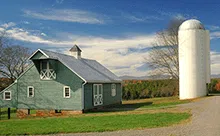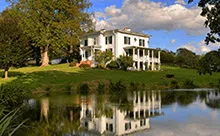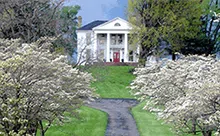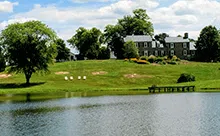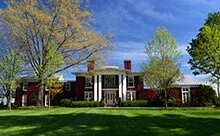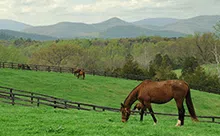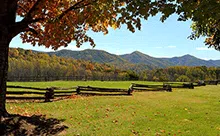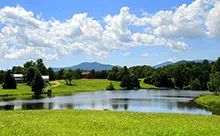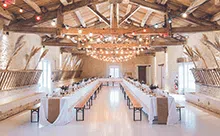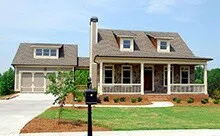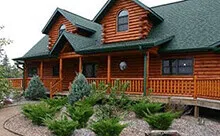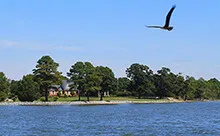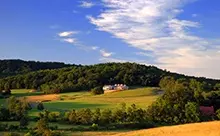
home / real estate listings / virginia historic homes / charlottesville / charlottesville architecture
Historic Architecture in Charlottesville, Virginia
When it comes to historic properties and historic architecture in Charlottesville, Virginia, you can still see the heritage and influence from Virginia’s most celebrated architect, Thomas Jefferson, principle author of the Declaration of Independence. Mr. Jefferson’s Virginia features some of the most architecturally significant buildings in the Commonwealth, as well as rare opportunities for historic architecture enthusiasts and people interested in historic homes for sale in Charlottesville and Central Virginia.
Three famous historic homes in Charlottesville and the Central Virginia region include:
Monticello – The Original Gem of Historic Homes and Charlottesville Architecture
The celebrated home and estate of President Thomas Jefferson and masterpiece of classic Greek Revival architecture, Monticello is a National Historic Landmark situated minutes from downtown Charlottesville, the epicenter of Albemarle County and Central Virginia.
Montpelier – Lifelong Residence of James Madison
Montpelier was the lifelong home of President James Madison, who many consider to be the father of the U.S. Constitution. One of several sites that should be added to a regional tour of Charlottesville historic homes (Montpelier is approximately 30 minutes from Charlottesville), the Montpelier estate features the Madison mansion, historic buildings, exhibits, archaeological sites, gardens, forests, hands-on activities, a new Visitor Center, and a freedman’s cabin and farm.
Ash Lawn – The Home of James Monroe
Yet another beacon among historic homes in Charlottesville, Ash Lawn-Highland is an historic house museum, 535-acre working farm, and performing arts site in Albemarle County, Virginia. President James Monroe and his wife, Elizabeth Kortright Monroe, owned Ash Lawn-Highland from 1793 to 1826 and made it their official residence from 1799 to 1823.
Charlottesville Historic Architecture: A Tradition of Excellence and Education
With a tradition in architecture rooted in and initiated by one our nation’s founding fathers, it is no wonder that Charlottesville is home to one of the most renowned schools of architecture in global higher education. The University of Virginia School of Architecture was a cornerstone of founder Thomas Jefferson’s concept for the U.Va. Jefferson intended to use the architecture of the Academical Village as an instrument for students. Jefferson even planned to teach architecture himself but died in 1826 before his vision could be fully realized.
The U.Va. School of Architecture was founded in Charlottesville more than 100 years after Jefferson’s death. In the nine decades since its founding, the school has grown from an initial enrollment of eleven students to more than 350 undergraduate and 175 graduate students, with 54 full-time faculty members and an extensive staff. The school emphasizes the role of architecture as a mode of critical inquiry of contemporary culture, grounded in history and extended through observation, analysis and design.
School architects work as citizens in the evolving and inherited ecologies of cities; its faculty and student body are dedicated to providing leadership to the discipline and practice of architecture through innovative multi–disciplinary research, practice, and teaching. The University program integrates social, aesthetic and environmental processes.
Architectural historians at the University of Virginia explore the history of architecture, landscape, and urban form by analyzing the sources and forms of architectural expression. In addition, the program believes architecture is a critical feature in a broader social and cultural context. The school’s program in Historic Preservation enables students to expand their professional studies through specialized training in the practice and ethics of historic preservation. Areas of study also include Medieval, Renaissance, Baroque, Asian and Modern European architecture, cities, and landscapes.
The School of Architecture is consistently ranked among the top U.S. Architecture Schools:
- Number 9 in the 2010 U.S. News ranking of NAAB-accredited graduate architecture programs.
- Number 7 (2005), Number 3 (2006), and Number 5 (2007) top architecture schools in nation by the journal DesignIntelligence in its annual edition of “America’s Best Architecture & Design Schools.”
- Number 1 in the nation in the new 2007 category of Sustainable Design Practices.
Charlottesville Architecture and the Integrity of Historic Buildings and Properties
The integrity of Charlottesville architecture is safeguarded and preserved by the city’s Board of Architectural Review. This governing body makes certain that designated Charlottesville historic properties and properties within Architectural Design Control (ADC) districts, reflect the elements that have made the Charlottesville real estate market so attractive: the cultural, social, economic, political, and architectural history of this lively Southern university town.
The Charlottesville architecture board accomplishes its mission by reviewing all changes to the exterior of Charlottesville historic properties. This preservationist review includes:
- New building construction
- Alterations to buildings
- Building additions
- Building demolitions
The Board of Architectural Review consists of nine citizen board members appointed by the Charlottesville City Council. The Board meets on the 3rd Tuesday of each month, starting at 5 PM For people who own a building or historic home in Charlottesville, applications to the board must be submitted three weeks before the day of the meeting, by 4 PM.



















